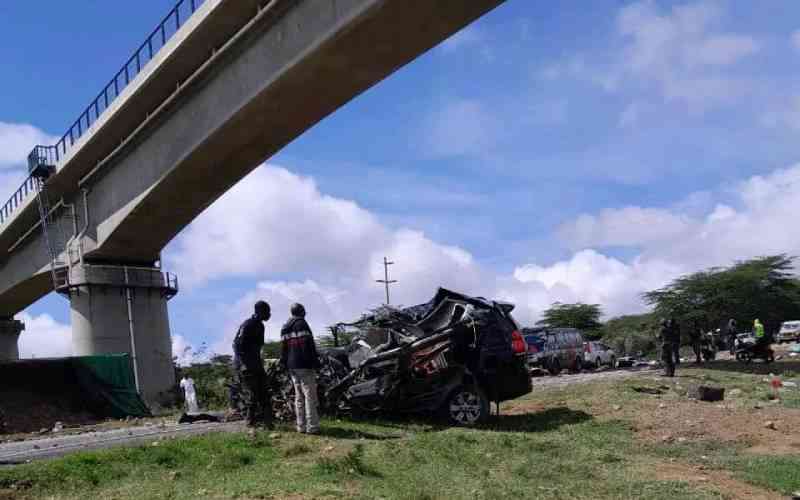
Every day we hear and see devastating and traumatising images of the consequences of worsening drought in 20 out of the 23 Arid and Semi-Arid Lands (ASAL), counties.
According to United Nations (OCHA), the number of people in need of humanitarian assistance is projected to increase to 4.35 million by October, but those affected are more, with the area affected being more than half of Kenya.
The current drought has devastated families because of failure of rains in several consecutive seasons. The closure of livestock markets due to Covid-19 in 2020 suppressing formal livestock trade added to the devastation.
Drought continues to ravage these 20 counties, with 10 of them at alarm levels and 10 others in normal drought level slowly sliding to alarming levels. The leaders of these counties are desperately appealing to President Ruto to declare drought a national crisis to give it visibility and focus.
The National Drought Management Authority (NDMA), established by the NDMA Act (2016) is mandated to exercise overall coordination over all matters relating to drought risk management and to establish mechanisms, either on its own or with stakeholders, to end drought emergencies.
Ironically, although this agency has existed since 2016, it does not appear to have made exponential progress in its mandate. This is partly as a result of extreme weather and climate change and partly due to lack of adequate resources and capacities to address drought emergencies.
NDMA has recorded some success stories but these pale in comparison to the human suffering and devastation from drought resulting in high animal death rates.
NDMA and its partners' efforts to distribute water, food assistance, supplementary livestock feeds and expansion of the Hunger Safety Net Programme in the affected counties, to collaborate with academia in research on drought risk management and to help build drought resilience, all appear grossly inadequate.
NDMA and its stakeholders require more resources and funding to make any far-reaching interventions at this stage. We need national concerted efforts and mobilisation to arrest the prevailing situation and avert a national catastrophe in these 20 counties as the weather/rains predictions are not promising at all; this is why this drought emergency should be declared a national crisis.
Drought is followed closely by famine and these counties have also registered high levels of malnutrition and starvation. These are also associated with growth stunting for children and animals because of inadequate nutrition and essential mineral deficiencies.
We need to build our capacities for disaster risk management and heavily invest in prevention and capacity building in ASAL counties. NDMA has been calling on government to build capacities and resilience to help us prevent future drought emergencies because, responding to these emergencies alone, is not sustainable. They are right.
Kenya and neighbouring countries affected by drought will not realise most of Sustainable Development Goals (SDGs) because all 17 of them are interlinked and water is at the core.
We cannot achieve any poverty, zero hunger, good health and wellbeing, quality education, gender equality, clean water and sanitation, address climate change, sustain life on land, sustain peace, justice and build strong institutions when we are devastated by drought emergencies.
And, we will not recover from the current drought emergencies in good time to achieve these SDGs by 2030.
Stay informed. Subscribe to our newsletter
It is devastating to watch people feed cardboard paper to animals in small rations. More devastating is knowing there are some counties with over-abundance of food and animal feed, some even going to waste.
As we build capacities and resilience, we need to identify ways in which first aid in adequate water, food, animal feeds, and other required emergency support get to these counties. The national government should establish a structured framework to arrest the current situation, prevent it from getting worse and build capacities and resilience for the future.
Addressing national emergences such as drought, flooding, insects' infestations, famine etc., conclusively, should be a national priority in the national budget and should not be left to the concerned counties because they lack capacity due to the exposure to prolonged drought emergencies. The government must ensure no one is left behind.
 The Standard Group Plc is a
multi-media organization with investments in media platforms spanning newspaper
print operations, television, radio broadcasting, digital and online services. The
Standard Group is recognized as a leading multi-media house in Kenya with a key
influence in matters of national and international interest.
The Standard Group Plc is a
multi-media organization with investments in media platforms spanning newspaper
print operations, television, radio broadcasting, digital and online services. The
Standard Group is recognized as a leading multi-media house in Kenya with a key
influence in matters of national and international interest.
 The Standard Group Plc is a
multi-media organization with investments in media platforms spanning newspaper
print operations, television, radio broadcasting, digital and online services. The
Standard Group is recognized as a leading multi-media house in Kenya with a key
influence in matters of national and international interest.
The Standard Group Plc is a
multi-media organization with investments in media platforms spanning newspaper
print operations, television, radio broadcasting, digital and online services. The
Standard Group is recognized as a leading multi-media house in Kenya with a key
influence in matters of national and international interest.






